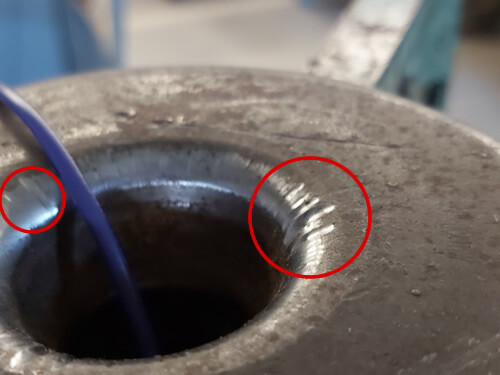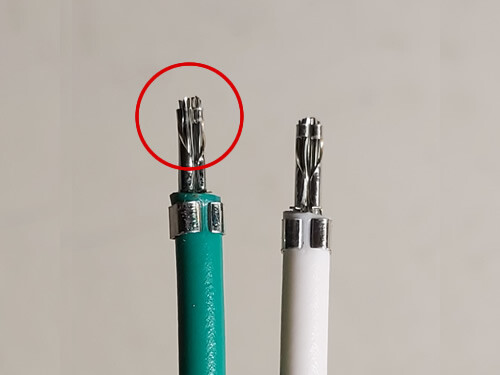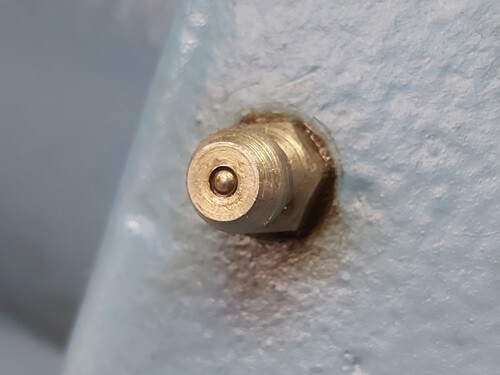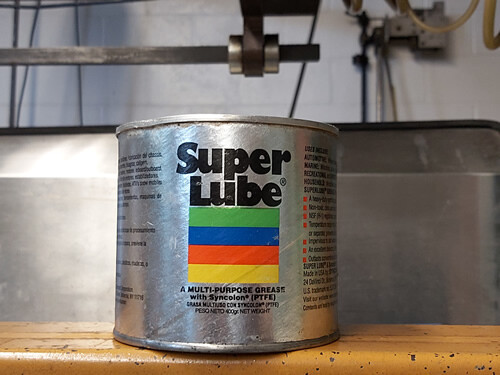**This is part 2 of the series on Setup & Maintenance. To view part 1, click here.

This week we are going to dive right into maintenance. Keeping machinery and tooling in perfect operating condition over many years of production work is no simple task. Manufacturing companies must create Standard Operating Procedures for operation and maintenance to maintain high quality in certified products.
Let’s look at the areas of interest when determining a maintenance schedule and what is to be done to a machine or tool in order to maintain it.
Maintenance Intervals

Most professional machinery for the commercial wire industry and the tooling options available are shipped with documentation from their product engineering dept. outlining recommended maintenance for their equipment. It is paramount that these intervals be followed since testing to failure is how they tend to derive the timeline. These documents describe lubing requirements, spacings, wear patterning, perishable tooling insert intervals, retorquing specs for checking machinery integrity and more. This is the first place to start when creating a maintenance plan for a manufacturing company. With these hard rules in place, scheduling can be made for maintenance crews to efficiently maintain all machinery and tooling on a regular basis.
Lube
The most common maintenance step for any moving machinery is lubing. Not all lube products are created equally, each having a specific weight and application based on viscosity and other additives. Often, machine manuals will describe a very specific type of oil or grease to be used on a specific part of the machine. It is important that the correct type be used as it was tested for its application. When wrong weights and additives are used erroneously, slides, push rods, tight tolerance areas can become gummed up and function worse than without the wrong lube. Always follow manufacturer recommendations on lube products as there are many uses and types. Using the wrong ones can cause more harm than good.

Parts wear & Perishable Tooling
In commercial wire lead and harness manufacturing, we commonly use a host of blade tooling, die crimpers & anvil tooling and a selection of custom tooling pieces for various jobs. It is important that any removable/perishable tooling is monitored over the lifecycle of the tooling use for wear. Over multiple thousands of hits, terminal crimp tooling slowly loses its surface as a result of the pressure and heat created during a pressing cycle. Although the tooling pieces are hardened tool steel crushing on a softer metal (often tin plated brass or bronze), the crimpers still lose their integrity over time. Knowing and testing the dimensional specs of your tooling is critical to the quality of the resulting parts. Creating a monitoring/audit schedule for perishable tooling inserts is one way to reduce re-tooling costs. As thousands of cycles take place, small modifications must be made to maintain the same quality from your tooling as it wears. Each perishable tooling piece has loss limits before they need replacing so robust monitoring keeps them in full operating shape.

Training
Operator training is important especially with crimp tooling as part of the monitoring process. The visual appearance of a crimp will shift as tooling wears to the point that it can start creating QA failures on the products. If keen operators are trained to watch for those differences, they can mitigate any damages and failures by noticing and calling to attention any visual changes as they are operating.
On cutting machines, belt wear can change the finished spec of a wire product, so operator monitoring is essential to product accuracy. When belts are worn out and changed at the right time, there are no failures, so proper training makes all the difference in keeping tools and products all working properly.
Manufacturing Infrastructure Maintenance

Another area of maintenance often overlooked in smaller companies is the maintenance of the facility and the tools used for the production factory. In this list are things like air compressors, networking devices and computers, cabling, electrical, Hvac, tow motors, cranes, and any other tools permanently in place.
As technology develops, we are seeing more and more air driven products being replaced by electric designs which is slowly shifting the paradigm in factories from doing more facility maintenance on things like air compressors and lines to doing machine maintenance. In order to maintain production over time, the gear permanently housed in the facility needs care.
Every manufacturing company should have in place a schedule for each of the pieces of equipment to ensure they are kept in operating condition. For example, there is little worse than losing a main air compressor while running high speed tooling that requires it, or losing network connectivity while sending payroll values to a third party. Jobs have been placed on hold due to this in the past and so it is essential to catch issues with operations gear before they impact the business function.

